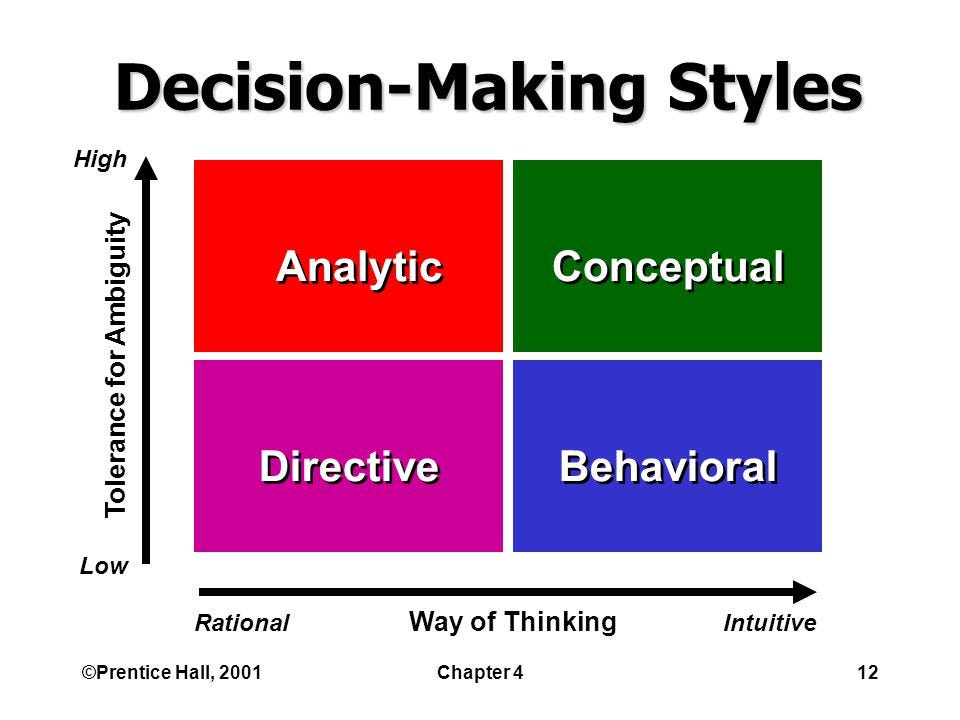Leaders and Decision Making

A leader’s role in directive decision-making
A leader needs to sense the situation, categorize it as a scenario that calls for a direct decision and respond appropriately. Make sure there are best practices in place for recurring processes. When classifying the situation, remember to ask yourself: Is this my decision to make, and do I have all the required information to make this decision? Delegate if necessary, but remember to communicate in clear, direct language. It’s a leader’s job to understand when extensive, interactive communication is unnecessary and to make direct decisions based on the information they already have.
2. Analytic decision-making
Analytic decision-makers examine much information before taking action. For example, analytic leaders rely on direct observation, data, and facts to support their decisions. However, unlike directive decision-makers, an analytic decision-maker will seek information and advice from others to confirm or deny their own knowledge. These decision-makers have a high tolerance for ambiguity and are very adaptable, but they like to control most aspects of the decision process. This style is a well-rounded approach to decision-making but can be time-consuming.
A leader’s role in analytic decision-making
Unlike directive decision-making, leaders need to analyze all the information available to them before deciding on a course of action. It’s beneficial to assemble a team of industry experts to assist with analytic decisions; however, leaders need to consider conflicting advice and ideas openly. At the same time, leaders need to consider the viewpoints of non-experts in order to make the most of the analytic decision-making process.

medium.com
3. Conceptual decision-making
The conceptual decision-making style takes a more social approach compared to the directive or analytic methods. Conceptual decision-makers encourage creative thinking and collaboration and consider a broad array of perspectives. These decision-makers are achievement-oriented and like to think far into the future when making important decisions.
A leader’s role in conceptual decision-making
For conceptual decision-making to be effective, leaders need to create an environment that encourages experiments designed to reveal instructive patterns over time. As well, leaders need to make a point of increasing interaction and communication. Create groups of people who can contribute innovative ideas and help with the development and delivery of complex decisions. Patience is key, and leaders need to give themselves time for reflection.
4. Behavioral decision-making
Behavioral decision-makers try to make sure everyone works well together. Like the conceptual style, behavioral decision-making is group-oriented; however, rather than brainstorming potential solutions, the group is given the options available to them. From there, the group discusses the pros and cons of each choice. This style of decision-making considers many different outlooks and opinions in the process.
A leader’s role in behavioral decision-making
Leaders need to open up lines of communication in this style of decision-making. Again, create groups of people who can contribute their opinions and encourage democratic discussions. When employing the behavioral decision-making style, don’t just impose a course of action. Instead, look at what decision creates the most harmony within the organization.
Reference :
https://enterprisersproject.com/article/2018/7/4-styles-decision-making-leaders-guide


Comments
Post a Comment